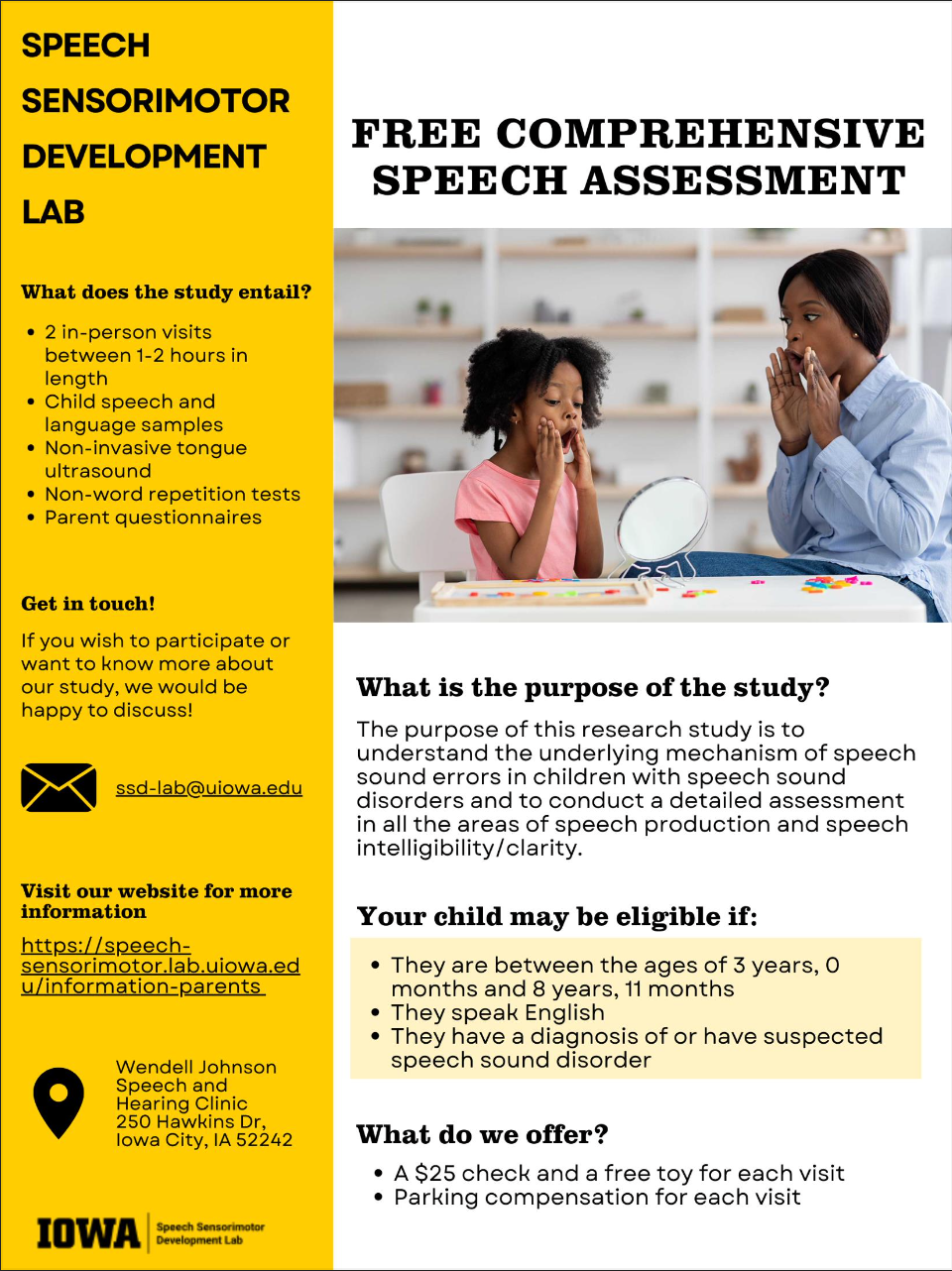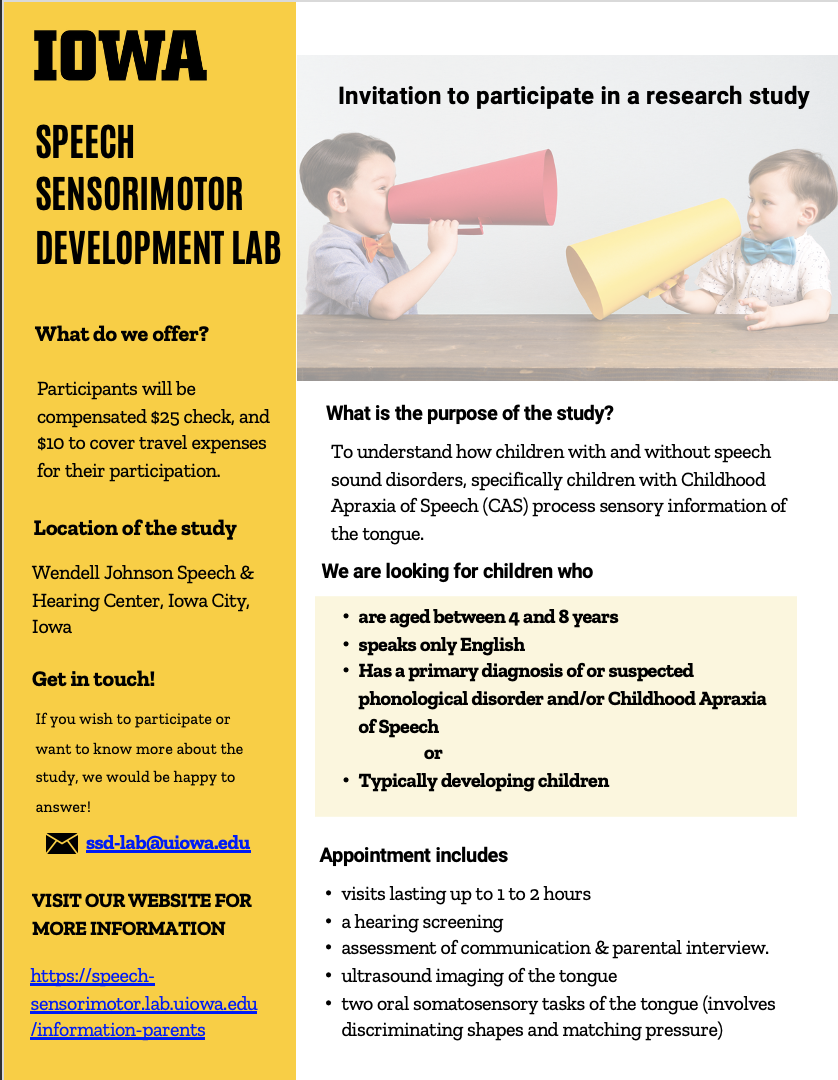Characterizing the Profiles of Children with Speech Sound Disorders
In this project, we aim to conduct a comprehensive evaluation through parent questionnaires and standardized assessments covering a full range of knowledge and skills involved in speech production and development. The speech evaluation will also include ultrasound imaging of the tongue movements of the children.
The purpose of the study is to understand the underlying deficits in children with speech-sound disorders (SSDs) by conducting a structured and evidence-based assessment protocol. The comprehensive assessment will allow us to identify the core deficits and compare performance across different tasks between different subgroups of speech sound disorders. This will aid speech-language pathologists (SLPs) in treatment planning leading to better outcomes in therapy.
The comprehensive assessment will be conducted at the Wendell Johnson Speech & Hearing Center. The children's productions will be audio and video recorded and later transcribed in the International Phonetic Alphabet (IPA). A detailed analysis of the patterns of speech errors will be performed. Based on the results, different patterns of performance across tasks and between subgroups will be identified. This could help develop a complete profile of the child, which would aid clinical decision-making and treatment outcomes for the child.

The Role of Somatosensory Perception in Speech Sound Production and Speech Motor Learning in Children with CAS
Childhood apraxia of speech (CAS) is characterized by impairments in planning and programming leading to errors in speech production. There have been several case reports that the core deficits of childhood apraxia of speech (CAS) stem from reduced oral sensitivity of the tongue and the palate (Terband et al., 2009). Through computational modelling it has been hypothesized that poor somatosensory information would lead to degraded feed-forward commands and an increased reliance on feedback control (Terband et al., 2009).
We aim to test this hypothesis and understand the somatosensory acuity in children with CAS by measuring performance on two somatosensory measures; an oral stereognosis task and a force pressure matching task. The performance on these measures will be compared to typical children and children with other speech sound disorder. Additionally, the performance on these tasks would be correlated to various outcome measures that reflect speech production and tongue complexity.
The present study allows us to achieve a more comprehensive picture of the challenges faced by children with CAS and identify potential diagnostic markers. A complete profile of the child’s sensorimotor abilities will allow speech-language pathologists to choose targeted interventions for children with CAS.
